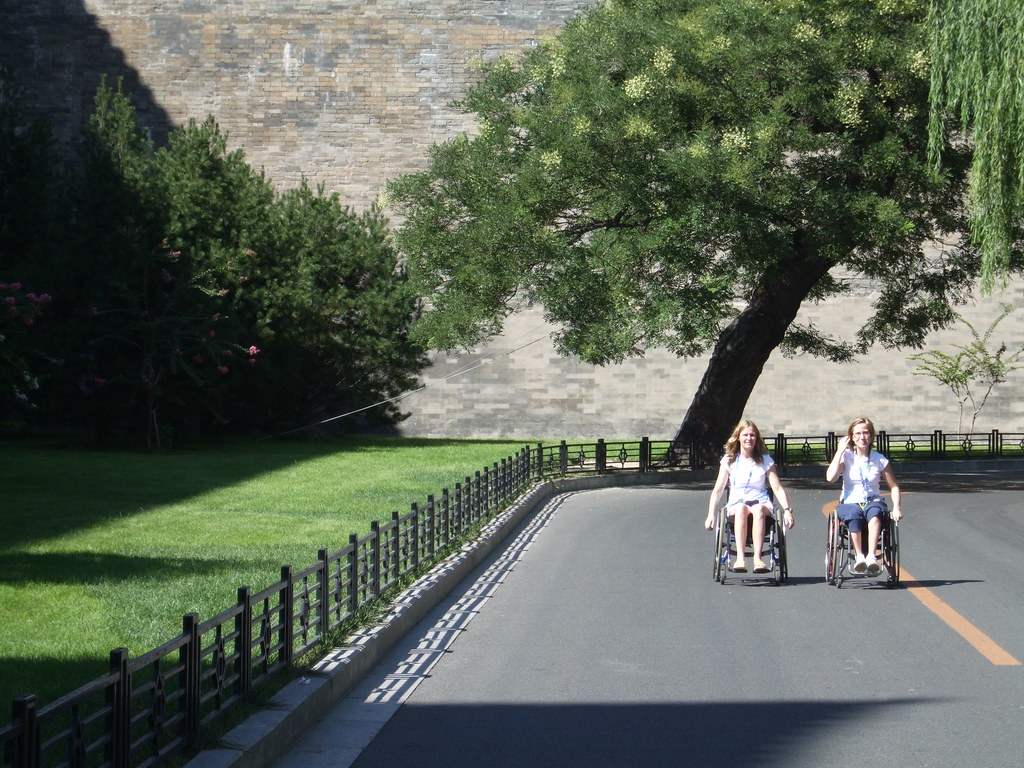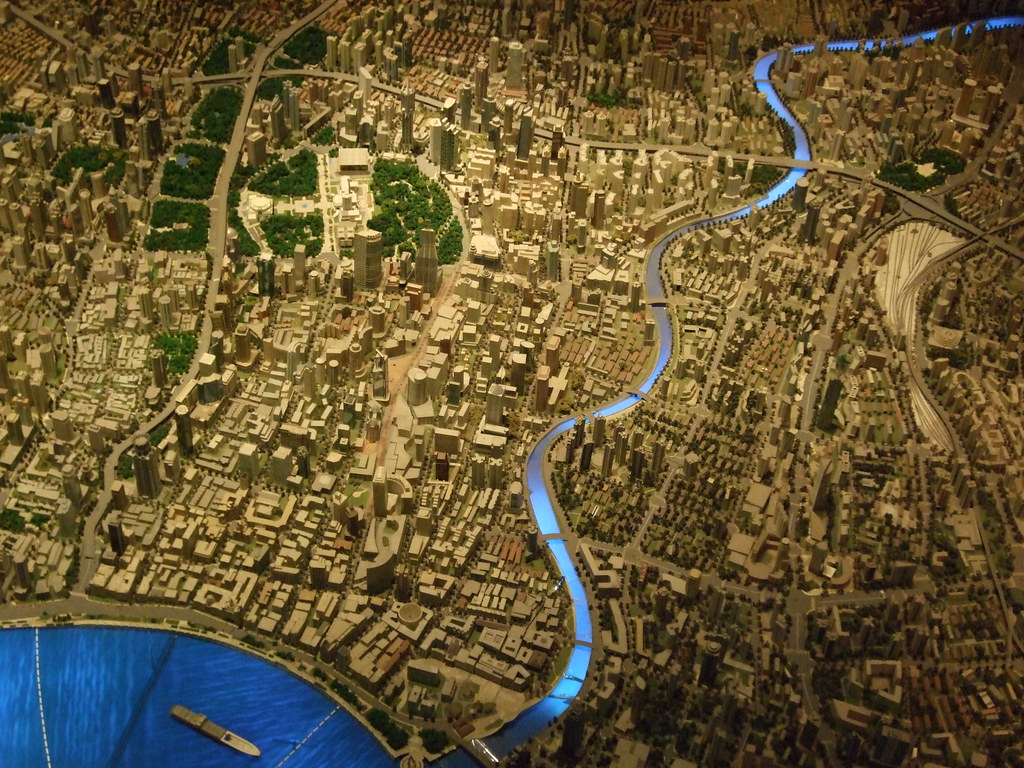
After passing paralympian tourists circling the Forbidden City (pic) on my bicycle in Beijing, I am in Shanghai, a city of 15-20 million whose sheer population density prompts amazing adaptations for mobility of the most diverse modes of transport of goods through the city. The subway system is incredibly complex and the bicycle seems to be for traffic experts, so I have been riding in taxis, trying to comprehend this city's '
urbanatomy'. I visited the
Urban Planning museum (
Youtube) with its enormous
model of Shanghai. The form and the presentations are mostly spectacular, but I wonder about the real cultural processes of renewal, regeneration and 'development' here. I thought perhaps I might take to the river, for another perspective.
After leaving landlocked Mongolia, I have also just read, on
Tour Watch, of some soon-to-be published "Waypoint - Backstrom" Principles for accessible maritime architecture, and it reminded me of architects' role in widening the accessibility of environments, not only on land in the developing world but also on water. I enjoyed sailing on the Swan River on my last visit to my home town Perth, where I will visit again this month.
Excerpt from the Waypoint - Backstrom Principles:
1) Begin with Universal Design
The principles of Universal Design are an essential element of seaworthiness. Assumptions of the abilities (physical, mental, or sensory functionality) of crew or passengers as constant over time in any single individual or uniform throughout the population of owners and users of the watercraft throughout its lifespan are to be questioned.
2) Design for Self-Sufficiency
Watercraft are the insertion of a terrestrial into a maritime environment. Pay attention to both social sustainability (Universal Design) and environmental sustainability (green design).
3) Design for Extraordinary Conditions
Maritime practice traditionally assigns clearly-defined shipboard roles and responsibilities. Design assumptions follow. Assumptions about the abilities (physical, mental, or sensory) of the idealized role-holder as they are designed into products, spaces, and practices may prove to be disastrous in emergency situations.
4) Design for Modularity and Revision
While a core tenet of Universal Design is that the design be sufficient "without special or separate design" the frequency of maintenance necessary for watercraft, especially in a saltwater environment, leads to frequent opportunities for upgrade to accommodate the range of abilities in crew and passengers.
5) Design for Seamless Intermodal Transfer
Sophisticated and efficient systems have been developed to load and unload watercraft, haul them ashore, or transport them.
- see
Tour Watchmore information:
The Rolling Rains ReportDr. Scott Rains, Consultant, San Jose, CA
srains@oco.net ,
Sherri Backstrom, Director Waypoint Yacht Charter Services
sherri@waypointcharter.com4648 Lakeway Drive Bellingham, WA 98229
After Mongolia, I have again been appreciating bicycles - a simple and ingenious form of urban transport ;
Some links -
Recently featured in AJ, The
Architects JournalAlex Moulton, creator of Moulton Bicycles a favourite of Reyner Banham and Norman Foster and
Improving London's Bicycle Spaces - an ideas competition
and from Banff's Art Centre; Art on a Bicycle
Songbike -
Touring Banff on a bicycle









